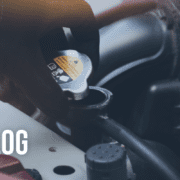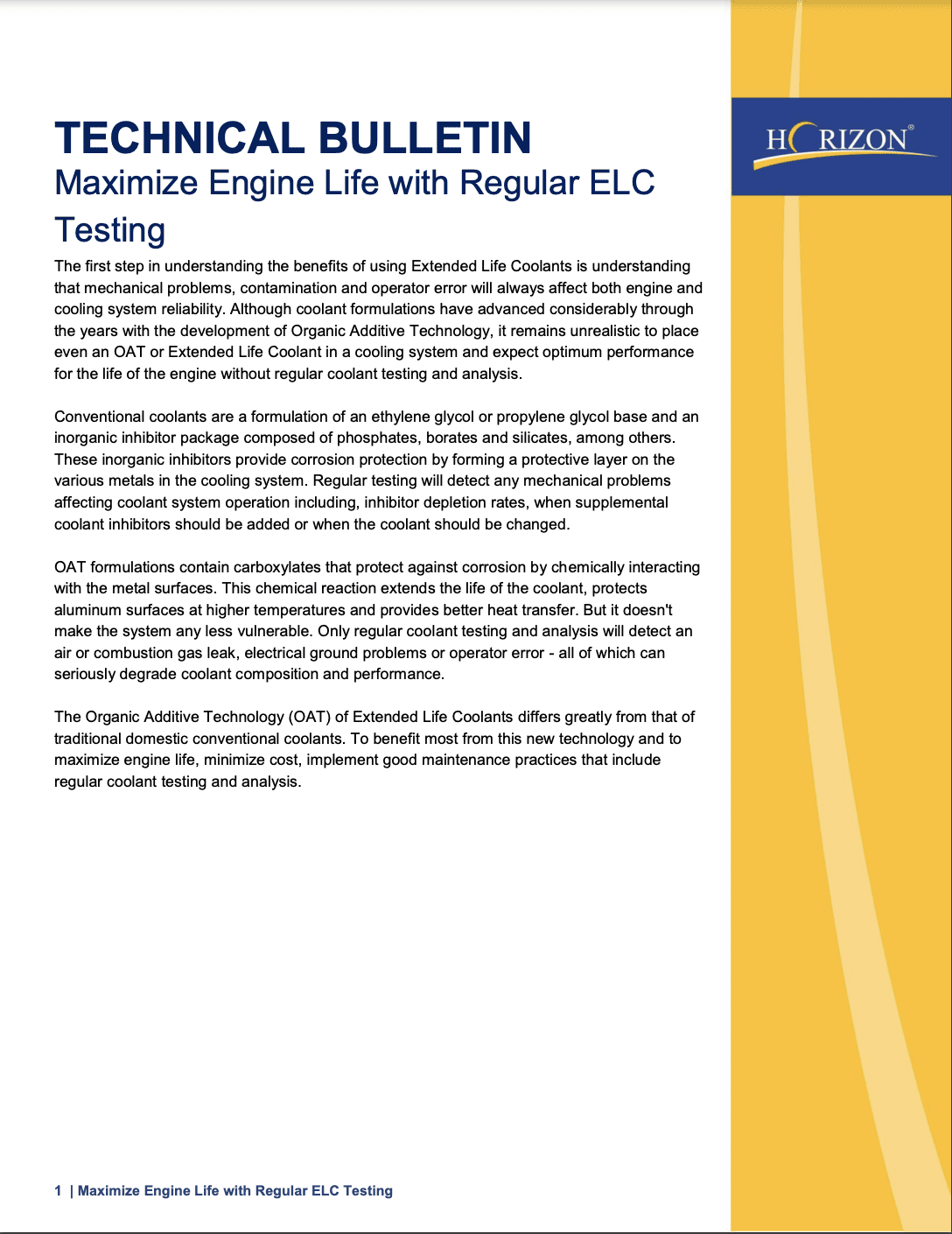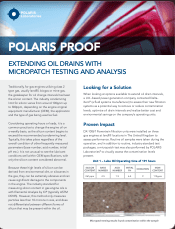Monitoring Extended Life Coolant with Testing

Using heavy-duty Extended Life Coolant (ELC) within your equipment means the coolant can reach a longer service life, according to coolant manufacturer guidelines. However, issues may arise during extended use. As these issues persist, the coolant’s ability to properly protect internal components can diminish over time.
Monitoring Coolant Properties and Conditions
Coolant manufacturers recommend monitoring engine coolant properties while in the system. Condition monitoring is a key tool and can assist with reaching the indicated lifespan of the coolant and identifying preventable problems like:
- Contamination
- Dilution
- Evaporation
- Degradation
- Mechanical issues
Early detection of these problems with regular coolant sampling will provide maintenance personnel with proper recommendations and suggested corrections to address abnormal fluid conditions and can result in fewer failures.
Monitoring ELC with Testing
Monitoring ELC corrosion inhibitors require different test methods compared to test methods used for conventional supplemental corrosion additives (SCAs). Proper laboratory testing and fluid information are important when submitting ELC samples to the laboratory for routine testing. Some ELC formulations that only contain carboxylic acid corrosion inhibitors may utilize a different curve for determination of glycol concentration and ELC fluids require additional testing to monitor carboxylic acid. Understanding the proper testing needed, performing regular fluid analysis and making proper adjustments will assist with reaching the coolant’s extended lifespan.

Proven Impact. Proven Uptime. Proven Savings.
Let us prove it to you.





